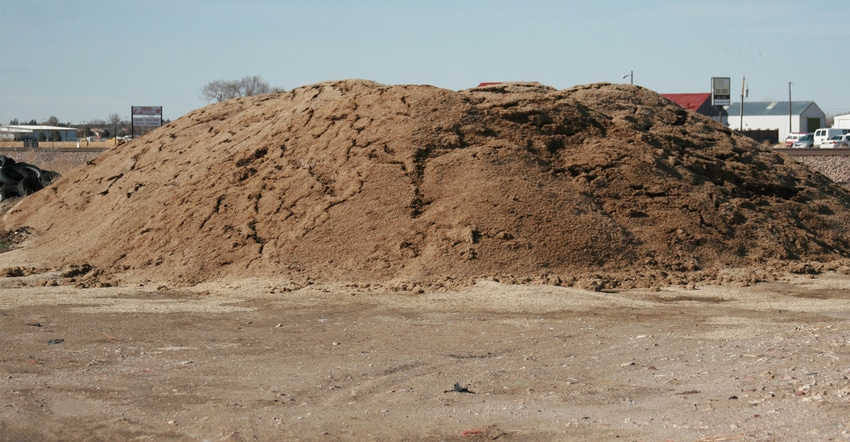February 12, 2020

By Karla Wilke
The adverse weather conditions experienced by most of agriculture in 2019 certainly affected sugarbeet production. The reduced volume of sugarbeets available for sugar production has affected the amount of the byproduct, sugarbeet pulp, available for beef cattle diets this winter.
Sugarbeet pulp often is used in gestating cow diets in winter to increase the energy density of a forage-based diet. The highly digestible fiber in sugarbeet pulp gives it a total digestible nutrient value of 85% to 90%. The crude protein value is about 10%.
One alternative source of feed that could be incorporated in beef cattle diets in place of sugarbeet pulp is corn silage. Well-preserved, good-quality corn silage often can contain 65% to 70% TDN and about 9% crude protein. Because the energy density is not as high in corn silage as beet pulp, and the moisture content is less, it could not replace beet pulp in a 1-to-1 ratio and result in the same quality diet.
For example, a 1,300-pound dry, pregnant beef cow fed 23 pounds of medium-quality hay, 2 pounds of alfalfa, and 12 pounds of beet pulp would be receiving 14.8 pounds of TDN and 2.3 pounds of crude protein, which is enough energy and protein to maintain body weight and rumen function.
This same cow fed 17 pounds of medium-quality hay, 2 pounds of alfalfa, and 20 pounds of corn silage also would receive 14.8 pounds of TDN and 2.3 pounds of crude protein.
Another alternative feed beef producers may have access to this year is the unprocessed sugarbeets that were deemed unacceptable for human consumption. When sugarbeets are available for livestock feeding, a contract — like what is required to purchase pulp — is not necessary to obtain them.
Preserving the sugars from additional loss is important. Making a mixture of poor-quality hay or residue and chopped sugarbeets and packing it in a bunker or agriculture bag is a good way to store them. A mixture of about 90% sugarbeets and 10% straw on an as-is weight basis likely will result in a mixture with a TDN value between 60% to 70%.
Unfortunately, this mixture is only about 4% crude protein. Therefore, a protein source needs to be added to the cow diet. An example diet for the aforementioned cow containing sugarbeets may be as follows: 15 pounds of medium-quality hay, 4 pounds of alfalfa, and 20 pounds of a beet-straw mix. This diet would contain about the same nutrient value as the two diets above.
Producers should obtain nutrient analysis of their feed ingredients from a commercial laboratory to more correctly meet the nutrient needs of their livestock. Local Nebraska Extension personnel can assist producers with ration balancing when alternative feedstuffs are included to ensure a balanced diet is developed.
Wilke is a Nebraska Extension cow-calf systems and stocker management specialist.
Source: UNL BeefWatch, which is solely responsible for the information provided and is wholly owned by the source. Informa Business Media and all its subsidiaries are not responsible for any of the content contained in this information asset.
You May Also Like




